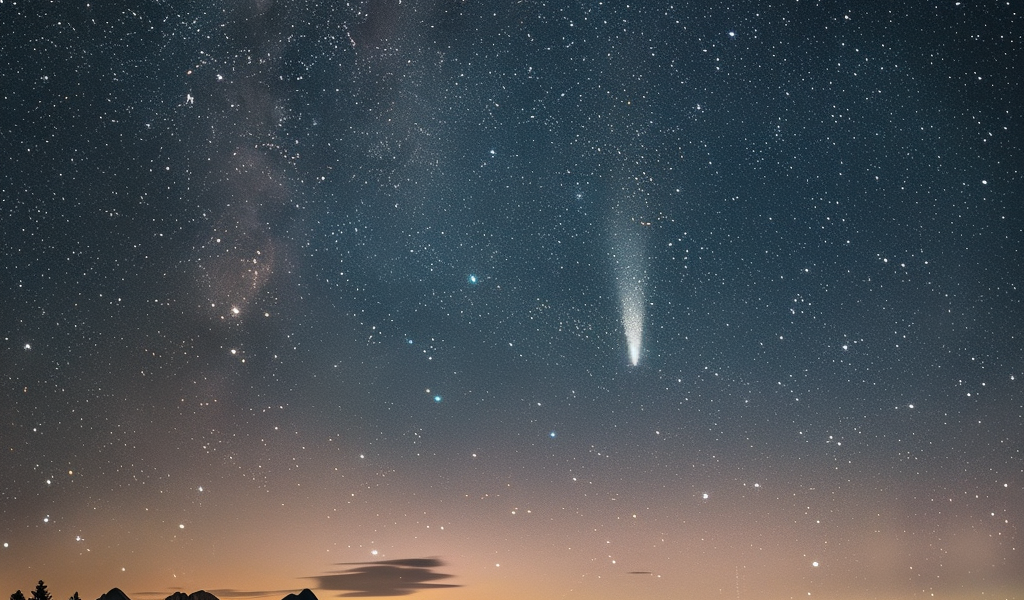Astronomy enthusiasts around the world are eagerly anticipating the upcoming visit of the ‘comet of the century,’ Comet C/2023 A3. Discovered in 2023, this comet has been hailed as a potential celestial spectacle due to its expected cometary tail that will dazzle viewers with its beauty.
Renowned Canadian astronomer and comet discoverer, David H. Levy, has labeled Comet C/2023 A3 as the ‘comet of the century’ for its unique characteristics. One standout feature of this comet is the spectacular cometary tail it is projected to leave behind, which is anticipated to be more prominent than usual.
The phenomenon is attributed to the comet’s journey past the Sun, where the dust and ice composing the comet will heat up significantly. This heating process will cause the ice particles to evaporate rapidly, releasing a substantial amount of dust into space. This dust cloud will disperse, creating a striking visual display.
What sets Comet C/2023 A3 apart is not only its cometary tail but also its brightness, which is expected to vary based on its activity in the coming months. Despite this variability, most researchers are optimistic that the comet will be visible to the naked eye, potentially outshining the brilliance of the C/2020 F3 (NEOWISE) comet that graced the skies in the summer of 2020.
One remarkable aspect of Comet C/2023 A3 is its visibility from the Northern Hemisphere, a rarity in the world of astronomy. The last time such a bright comet was visible from these latitudes was in 1997 with the appearance of Comet Hale-Bopp. The comet’s brightness can be attributed to the size of its core, which is estimated to have a diameter ranging from six to 15 kilometers.
The discovery of the ‘comet of the century’ occurred in South Africa on February 22, 2023, when the ATLAS telescope detected a new celestial object, later confirmed to be a comet and initially named A10SVYR. Subsequent observations from the Purple Mountain Observatory telescope on January 9, 2023, further solidified its status as a comet, though it briefly faced classification challenges.
To track the location of Comet C/2023 A3, enthusiasts can utilize the Sky Tonight application. By inputting ‘A10SVYR’ into the search engine of the app, users can access real-time information on the comet’s current position in the sky, allowing for a seamless viewing experience.





